Sicilians seem to have a traditional dish for every occasion. There are zeppole di San Giuseppe for St. Joseph’s Day, there’s cuccia for St. Lucy’s Day, and pasta ‘ncaciata for the Assumption of the Virgin on 15 August. Not to mention the Easter specialities, which change from town to town. But I’m only scratching the surface here; I could probably dedicate this blog solely to Sicilian feast-day food, and still have plenty to write about years from now. They even, in admirable Titus Andronicus style, bake ossa di morto, biscuity cakes moulded to resemble bones and skeletons, for the Day of the Dead on 2 November. Basically, give a Sicilian an excuse to celebrate, and they’ll run into the kitchen.
It will then come as something of a surprise to learn that Christmas is pretty much a traditional food desert here. This has always puzzled me. Come Christmas time, Sicilian shops and homes are full of pandoro and panettone, imports from Verona and Milan respectively, with the occasional panforte from Siena. Now, it’s true that Sicilians seem to feel a much stronger affinity with the Madonna and their patron saints than they do with the founder of Christianity, but surely he deserves a mince pie or something?
It was with this burning question that I headed for my local pasticceria. But before I could get down to the serious stuff, the ehm “academic research” part of my visit, I of course had to buy a couple of cannoli. Cannoli as they should be, with thin, crispy shells, and sweet, velvety smooth ricotta mixed with candied peel. I had to specify the candied peel, even though it’s traditional, because “lots of people don’t like it nowadays. They prefer chocolate chips”. “What is the world coming to?”, the shopowner’s tone of voice seemed to imply; it all starts with chocolate chips replacing candied peel, and before you know it, you’ll have a morally bankrupt society on your hands.
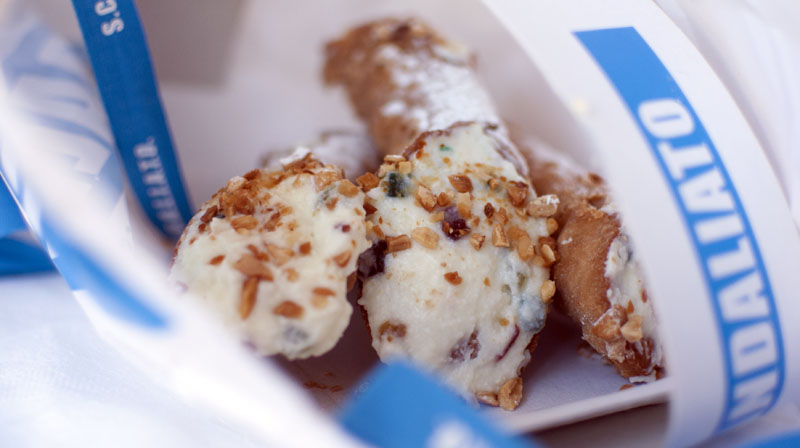 And I felt it would have been impolite to ignore their artisanal rose creams, violet creams and truffles…
And I felt it would have been impolite to ignore their artisanal rose creams, violet creams and truffles…
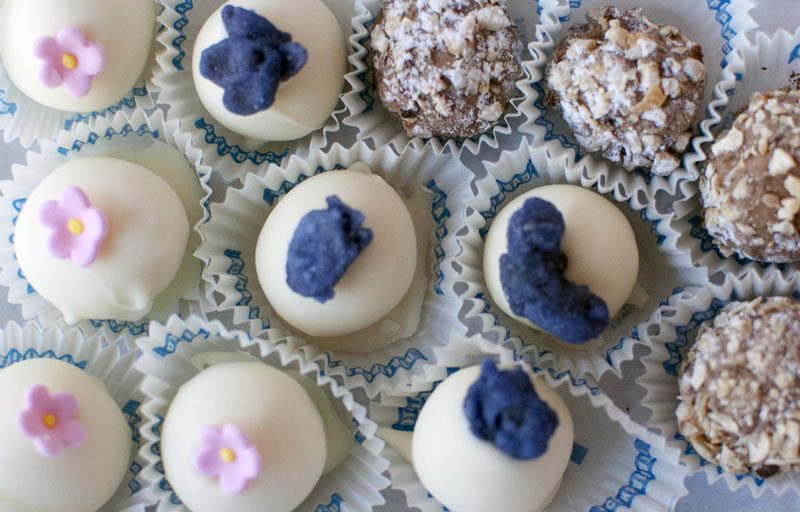 These preliminary orders were duly wrapped like Christmas presents, complete with fabric ribbons and the kind of minimalist, design-icon paper that you know heralds serious expenditure. Appearances can be deceptive. But not in this case. The contents were every bit as wallet-crushing as their wrapping suggests.
These preliminary orders were duly wrapped like Christmas presents, complete with fabric ribbons and the kind of minimalist, design-icon paper that you know heralds serious expenditure. Appearances can be deceptive. But not in this case. The contents were every bit as wallet-crushing as their wrapping suggests.
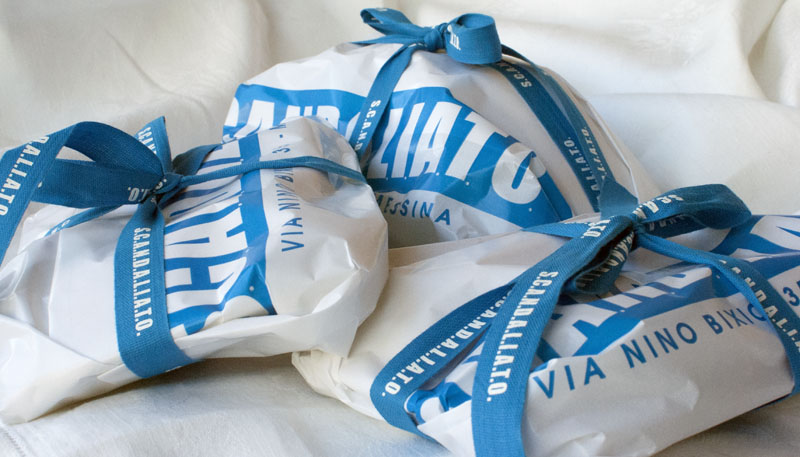 But I’m straying from the point here. I suppose you want to know how she replied to my shocked surprise at the lack of local Christmas fare. She looked me in the eyes and sighed. One of those deep, world-weary sighs that only Sicilians and Mexicans can pull off with any real conviction. I half expected her to announce that Christmas had been cancelled or something.
But I’m straying from the point here. I suppose you want to know how she replied to my shocked surprise at the lack of local Christmas fare. She looked me in the eyes and sighed. One of those deep, world-weary sighs that only Sicilians and Mexicans can pull off with any real conviction. I half expected her to announce that Christmas had been cancelled or something.
“Nobody respects the old traditions anymore,” she moaned. “I mean, take these nipitellate. Nobody buys them anymore, or even knows they’re traditional for the Immacolata” [Feast of the Immaculate Conception, 8 December]. I certainly didn’t, to be honest. As to why these little cakes aren’t selling like, well, hot cakes, is indeed a mystery. With a filling of pumpkin, almonds, cocoa and cinnamon, they are delicious, and in my house, where the life expectancy of cakes is already terrifyingly short, they were history almost before the aforementioned expensive ribbons and paper had been discarded.
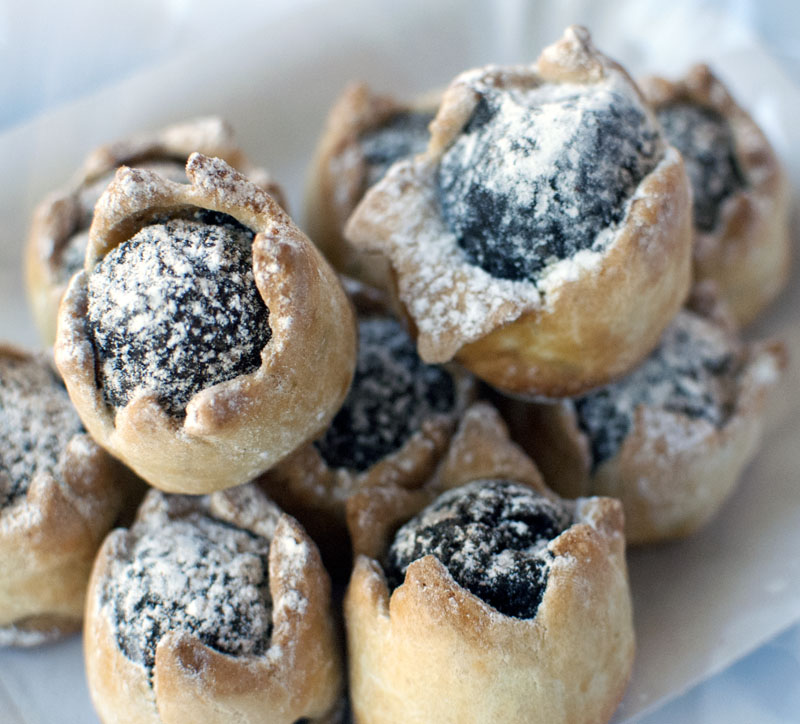 As for the strictly Christmas sweets, she offered (well, offered in the sense of ‘hoped I would buy’) a corona di pignolata. The knobbly bits are fried nuggets of dough, held together by chocolate or white lemon-flavoured icing, hence the two colours. Definitely edible, and the locals rave about it, but it’s a bit too much of a sugar overload for me. Pignolata is endemic here, and I had always presumed it was just another sweet, rather than a Christmas speciality. “That’s what everyone thinks,” she sighed, managing to imbue those few simple words with a depth of despair and Weltschmerz I would hardly have thought possible.
As for the strictly Christmas sweets, she offered (well, offered in the sense of ‘hoped I would buy’) a corona di pignolata. The knobbly bits are fried nuggets of dough, held together by chocolate or white lemon-flavoured icing, hence the two colours. Definitely edible, and the locals rave about it, but it’s a bit too much of a sugar overload for me. Pignolata is endemic here, and I had always presumed it was just another sweet, rather than a Christmas speciality. “That’s what everyone thinks,” she sighed, managing to imbue those few simple words with a depth of despair and Weltschmerz I would hardly have thought possible.
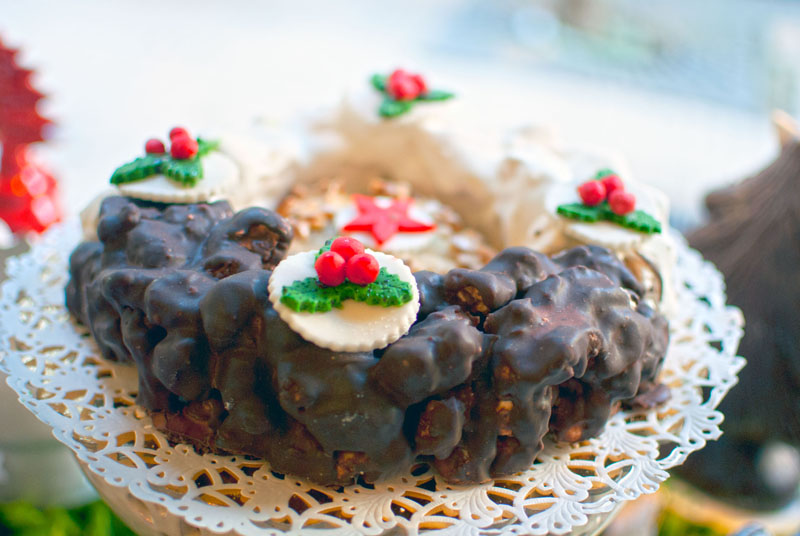 And then, continued the signora, keen to set the record straight, there was the stella di Natale, a star-shaped cake filled with candied citron. Likewise, dangerously, government-health-warning sweet. But maybe that’s the whole point.
And then, continued the signora, keen to set the record straight, there was the stella di Natale, a star-shaped cake filled with candied citron. Likewise, dangerously, government-health-warning sweet. But maybe that’s the whole point.
I finally left the shop, suitably chastised, aware that I had been getting it wrong all these years, and a good few euros poorer. So many euros poorer that I actually wondered whether I had paid for the cakes or been fined for my ignorance. On the other hand, I had happy, drooling children in tow, and that, if anything, is indicative of a pasticceria on the right track.
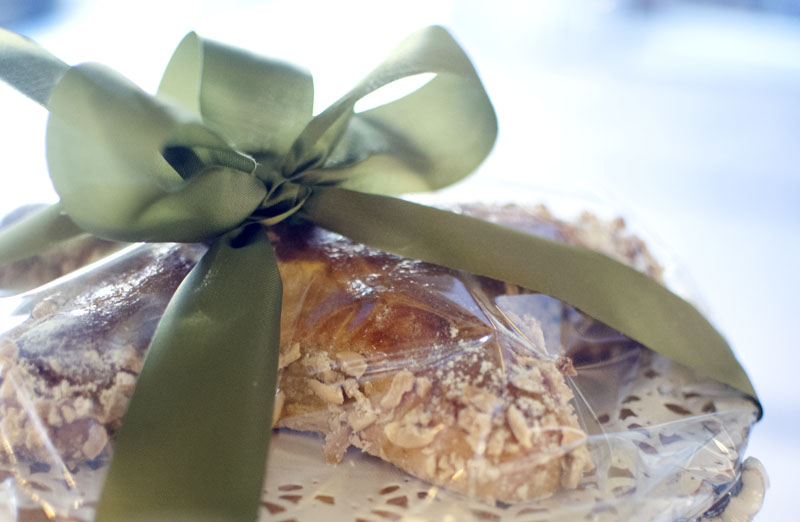
 English
English
Having sampled Sicilian sweet treats many times, this description left me smiling and feeling very happy that I’m visiting Sicily again soon!
Pingback: sweets for the dead – ossa dei morti | passioneat.it